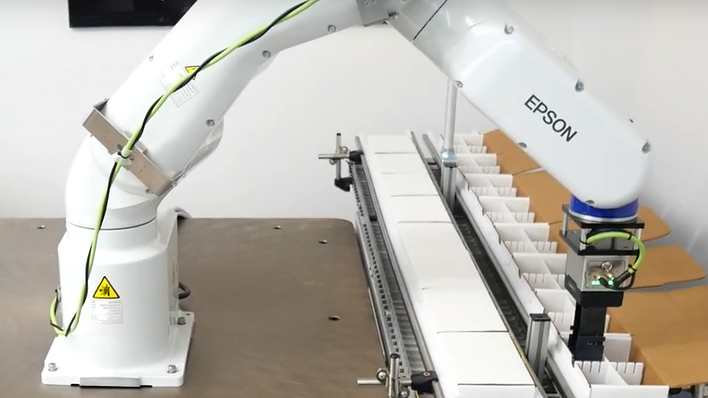An increasing number of people are spending more time working from home as a result of the pandemic. As employers turn to hybrid working models in order to prevent the spread of infections and offer greater flexibility to a larger demographic of potential staff, the traditional workplace as we know it is undergoing radical change.
Office spaces have for years centered around the idea of people working en-masse, usually in a room filled with rows of office desks. With fewer people in the building at any one time, companies are beginning to realize the potential of their offices’ large footprints, and are open to more twenty first century approaches.
Conference rooms are a great place to start, giving teams the opportunity to come together. Conference rooms have been overhauled in recent years with more communications going online; a great video bar is usually the center of a successful conference room nowadays.
While working collaboratively has its benefits, solo work still has its place in most people’s daily routines. For those unable or unwilling to work from home, an inspiring place to work in the office with reduced distractions can be a godsend.
An introduction to focus rooms
We continue to see a shift in working trends, and companies need to remain competitive in order to attract new workers and retain existing members of staff. For this, a positive office environment is key: a typical office worker will spend anywhere up to 40 hours here.
With a younger and more demanding generation to cater for, businesses will need to think outside the box in order to revise their typical workflows. Trending high are things that help to improve efficiency, and challenging the dated office layout is number one priority.
Employers and employees have experienced the successes of working from home, such as the ability to focus with fewer distractions. A focus room fuses the idea of working from home with an office-based routine to create a more intimate space.
A typical focus room will have enough space for a single person or a small team, and key to any focus room is its flexibility: anybody should be able to use one, they are not dedicated to a specific worker.
Focus rooms
Previously known as a phone room before the term ‘focus room’ became big, these are usually only big enough for one or two people. The original intent for this type of room, unsurprisingly, was for workers to place calls in a quieter environment without impeding on other people’s flow.
A focus room’s design can vary hugely from office to office, but some of the most easily implemented versions consist of multiple side-by-side rooms similar to shower cubicles in a changing room. More costly options include prefabricated booths that can be moved around the building. It’s vital that any design incorporates adequate soundproofing, especially as these private spaces are likely to be used for phone calls.
Pros:
Great for individual work
Basic designs require little investment
Cons:
Can be isolating
Limited capacity means they’re not great for holding team meetings
Alcoves, nooks and dens
This style usually forgoes total privacy, lacking a door for example, in favor of a more modern look. Be careful with the placement of one of these — they are best reserved for quieter ends of the building.
Each alcove can have its own unique style, making these twenty first century approaches to secluded working particularly attractive to dynamic workers who are inspired by their surroundings.
While lacking a door, they are usually enclosed by some walls helping to create a partially tucked-away feel. They’re great for informal catchups and impromptu brainstorming sessions.
Pros:
Unique design tailored to your building
Minimal building work means they can be cheap to set up
Cons:
Lack of total privacy
You are limited on where to place these
Libraries and lounges
An open plan layout such as a lounge is a loose grasp on the term ‘focus room’. An office with adequate floorspace can dedicate an entire section to quiet working, and libraries — which can be filled with useful resources — are great for this.
While a library alludes a more formal setting, a lounge provides a more comfortable space to work. A more homely ambiance will help to blur the boundaries for people working from different locations throughout the week, thus boosting productivity.
Pros:
Open plan allows you to cater for more workers
No building work or modification required
Cons:
Inevitably noisier than private rooms
Requires a lot of space
Huddle spaces or breakout rooms
These rooms are typically set up for small meetings, so using one for some solo work would be inappropriate. If you’re looking for a focus room large enough to accommodate a small team working on a similar project, a huddle space could be perfect.
These are usually equipped with plenty of desk space, while a large display would allow a team leader or project manager to present to their colleagues. Other uses include chatting to external clients, one-to-one reviews and weekly stand-ups.
Pros:
Multipurpose
You likely already have one setup, or one similar
Cons:
No good for working alone
Expensive to kit out with a full suite of tech
Final words
Whichever style focus room you decide suits your business needs best, there are a few things to remember. A good focus room, while primarily dedicated to focusing, is multipurpose. Design your room to be able to cater for a variety of needs; by using different types of rooms you will be able to appeal to more workers.
You could also consider adding the ability for users to book rooms. While there is an element of spontaneity to a focus room, workers spending most of their time in the office will want to be able to know when a room or area is free to use.
This article was written by Craig Hale from TechRadar and was legally licensed through the Industry Dive Content Marketplace. Please direct all licensing questions to legal@industrydive.com.
![]()



